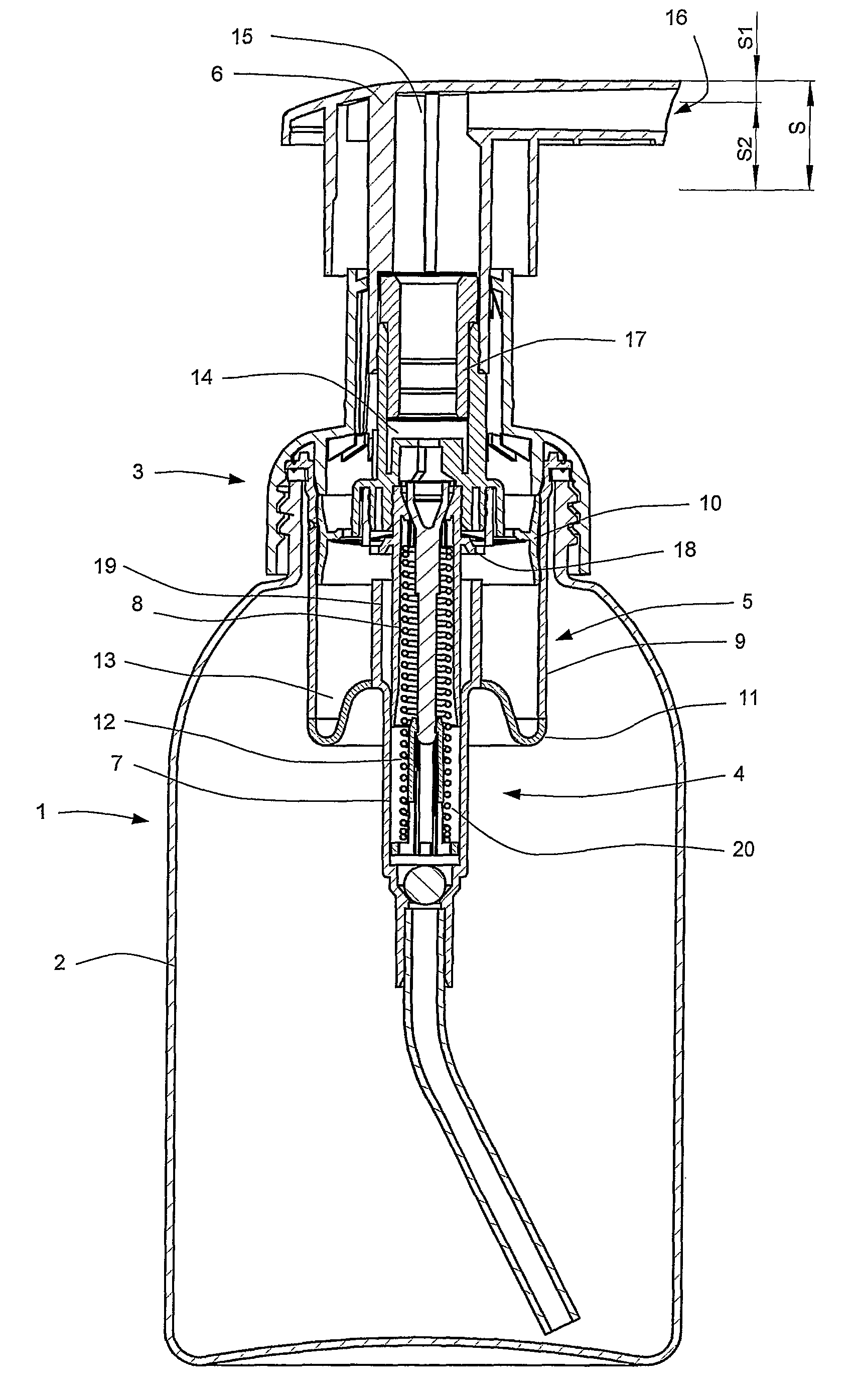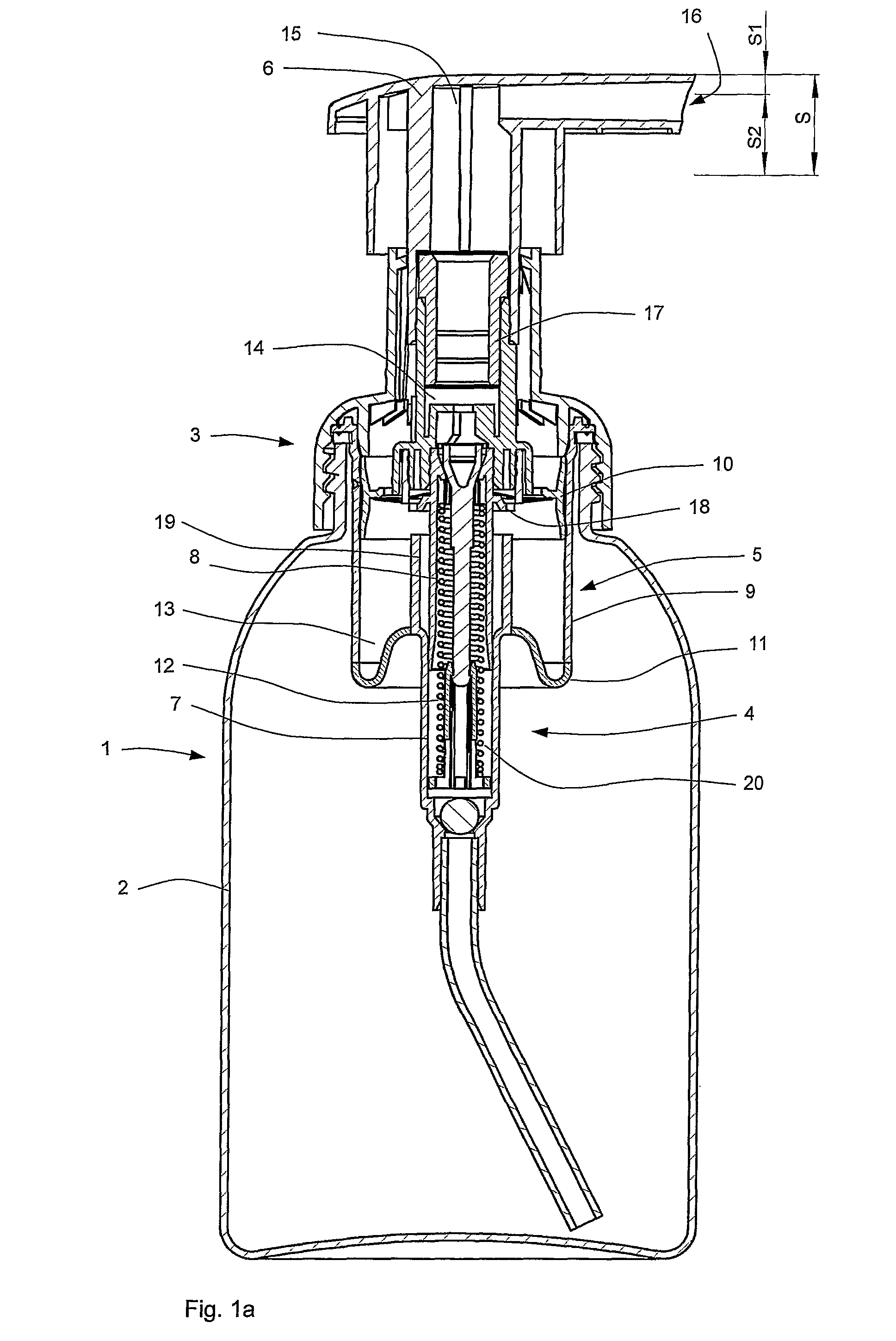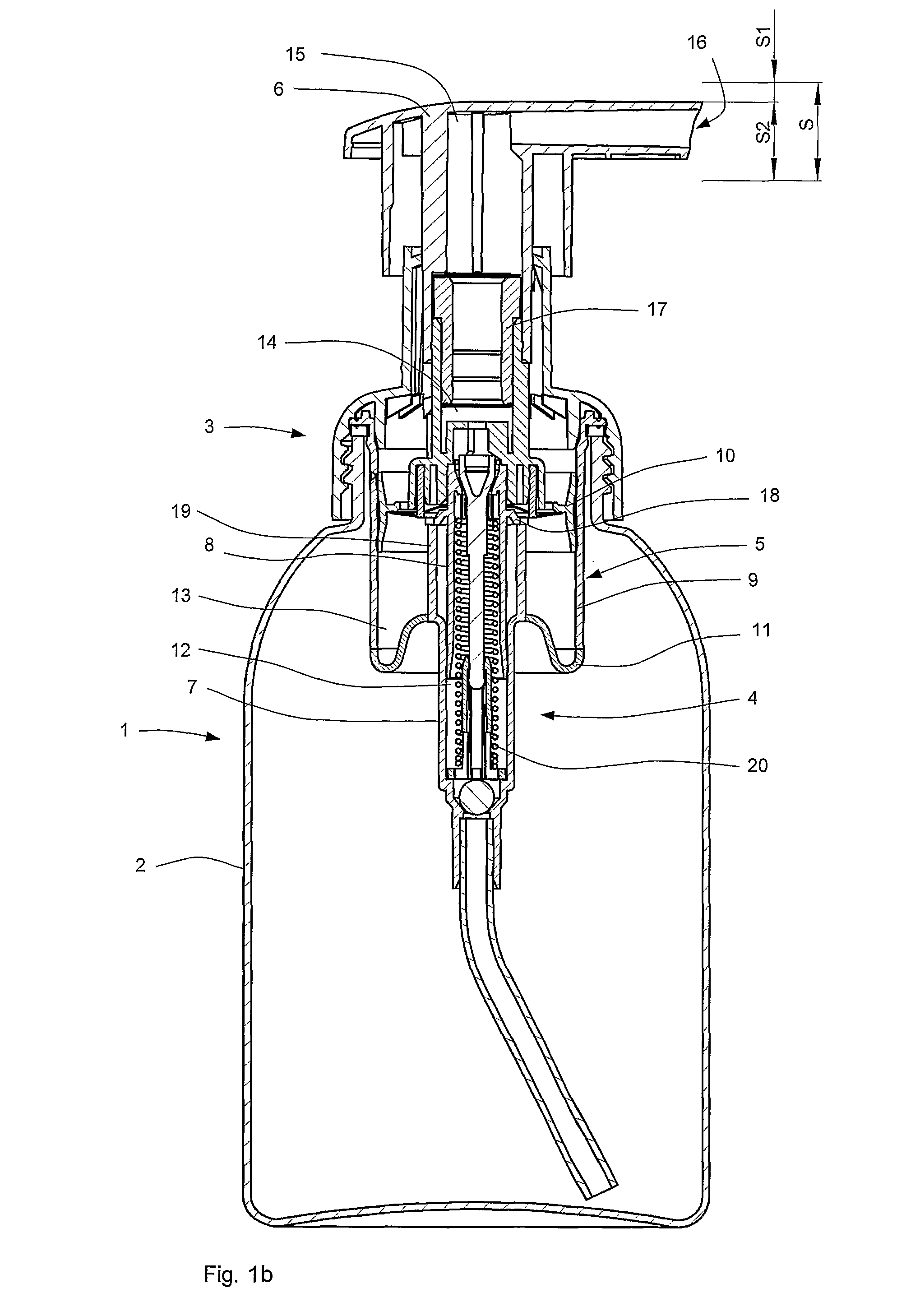Self-cleaning foam-dispensing device
- Summary
- Abstract
- Description
- Claims
- Application Information
AI Technical Summary
Benefits of technology
Problems solved by technology
Method used
Image
Examples
Embodiment Construction
[0027]FIG. 1a shows a dispensing device for dispensing a foam which is denoted overall by reference numeral 1. The dispensing device comprises a container 2 for holding a foamable liquid. The illustrated container 2 is a bottle which has to be aerated in order to prevent it from collapsing due to an underpressure in the container. However, it is also possible to use compressible containers, such as air-tight bags or compressible bottles.
[0028]A pump assembly 3 is fitted on an opening of the container 2. The pump assembly comprises a fitting collar for fitting the pump assembly 3 to the container 2, a liquid pump 4, an air pump 5 and a common operating button 6 which serves as operating element for the liquid pump and the air pump. In an alternative embodiment, the operating element may also be designed as a lever of a so-called trigger pump or a button of a wall-mounted container. The common operating button 6 can perform a stroke S with respect to a fixed part of the pump assembly ...
PUM
 Login to View More
Login to View More Abstract
Description
Claims
Application Information
 Login to View More
Login to View More - R&D
- Intellectual Property
- Life Sciences
- Materials
- Tech Scout
- Unparalleled Data Quality
- Higher Quality Content
- 60% Fewer Hallucinations
Browse by: Latest US Patents, China's latest patents, Technical Efficacy Thesaurus, Application Domain, Technology Topic, Popular Technical Reports.
© 2025 PatSnap. All rights reserved.Legal|Privacy policy|Modern Slavery Act Transparency Statement|Sitemap|About US| Contact US: help@patsnap.com



